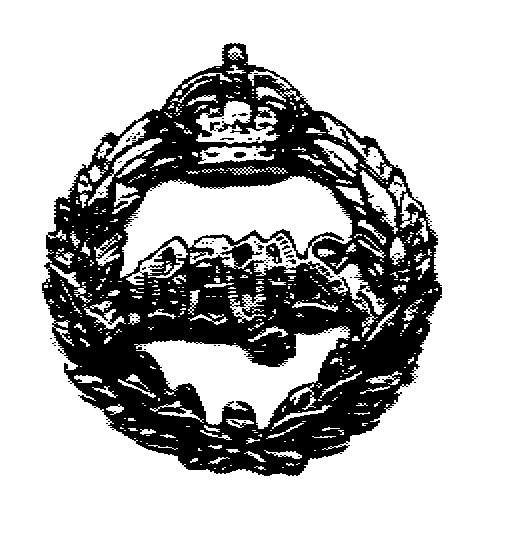

FELGATE, Edward Leonard
Private 6452
2nd DRAGOON GUARDS (QUEENS BAYS)
Died Tuesday, 1st September 1914. Aged 22
BORN ABBERTON
Edward was the son of Charles and Emma Ella Felgate of 26 Stanwell Street, Colchester. The Felgate family ran the village bakery in Abberton in the 1880s. This was badly damaged in the Great English Earthquake of 1884. Surprisingly, there were two bakers in this very small community next door to each other.

Edward was christened Arthur Edward Leonard at Saint Andrew's , Abberton on the 9th April 1893. The records list him under the name Edward, suggesting he dropped the name Arthur normally. His brother was christened also at Saint Andrew's on the on the 29th November 1894. The 1901 Census shows his father Charles 45 as a baker now residing at Layer-de-la- Haye with his family: wife Emma 46 - a grocer, sisters Elsie 13, Nora 11, and brothers Stanley 19 and Frank 6.
On 3 August 1914 Aldershot Command ordered mobilisation, two days ahead of the rest of the country. It was not unexpected; all leave had been stopped a week earlier and preliminary preparations had been put in hand. The Queen’s Bays, along with the 5th Dragoon Guards and the 11th Hussars, formed part of the 1st Cavalry Brigade, commanded by Brigadier General C. J. Briggs, himself a King’s Dragoon Guard. They were part of the Cavalry Division under General Allenby.
The regiment, commanded by Lieutenant Colonel H. W. Wilberforce, was stationed at Willems Barracks in Aldershot. The reservists came in quickly, mostly within the first twenty-four hours, making up 36 per cent of the strength of the regiment. Many reservists were old NCOs or men who had fought in South Africa, providing a welcome fund of experience and steadiness for the young troopers, who composed the bulk of the rank and file. Mobilisation was completed by 10 August, and the following day King George V and Queen Mary inspected the regiment, wishing all ranks the best of good fortune. The same day Captain H. W. Hall went ahead to France to arrange billeting in the forward concentration area. On the evening of the 14th The Queen’s Bays marched to Farnborough Station and entrained for Southampton, embarking in the 13,000-ton Minneapolis. The transport sailed on the 16th, reaching Le Havre that evening and disembarking the Troops the following morning in a deluge of rain. Fifteen French reservists and Territorials were posted to the regiment to act as interpreters. On the evening of Monday, 17 August and during the 18th, the regiment entrained in the famous French box wagons, marked ‘hommes 40, chevaux 8’, for Maubeuge, ninety miles away. The journey was something of a triumphal procession, with much flag waving and cheering along the route, and gifts of flowers, tobacco and chocolate. The horses were fed and watered at Rouen, where the men were supplied with hot coffee.

British cavalry in the main thoroughfare in Rouen during August 1914 on the way to the Front.
On arrival at Maubeuge, the Bays went into billets at Jeumont, Marpent and Solre-sur-Sambre, where they became the most advanced of all the British troops
The cavalry was ordered to move forward on the morning of 21st August, the 1st Brigade holding the crossings over the Aisne and Mons-Charleroi canal, with the Bays acting as advance guard. On the 22nd Lieutenant Kingstone recorded that ‘Sergeant Tucker and I went out half a mile in front of the canal. We got off out horses and walked to the top of a little hill, and sat down with a map and field glasses. We had not been there more than ten minutes before we saw a German Squadron move slowly across out front, not more than 400 or 500 yards off. That evening the infantry took over the outpost line, and the Bays moved twenty miles to the left rear to the village of Audregnies, in order to provide flank cover
The 23 August was spent at Audregnies, resting and cleaning, although the sound of heavy gunfire reverberated throughout the day. On the evening of the 23rd Sir John French, commanding the British Expeditionary Force, learnt that the French on his right were retreating, that the Germans were in much greater strength than previously reported, and were working round his left flank. The British had no option but to conform, but it took time to reverse all the supply and ammunition wagons which had closed up to the forward line. Orders reached the Bays at 10 p.m. on the 23rd, and they were saddled up and on the move for Quievrain, just south of Conde, by 11 p.m., where they were given the task of holding a stretch of the railway line from Mons to Valenciennes. Arriving at midnight the regiment found hundreds of miners and peasants assembled to help them dig a trench line, which was ready by dawn.
Daylight showed a dense mass of Germans, with bands playing and staff riding ahead, advancing about a mile to the right of the regiment’s position. As the pressure increased the Bays were ordered to retire, conforming with the general movement but, so far, with no direct contact with the enemy. All that day the Bays moved hither and thither, coming under some shrapnel fire, but with no casualties, until after a confused and tiring day of marching and counter marching, they settled for the night in a field near St Waast.
Throughout the 25th the Bays acted as rearguard, briefly contacting a patrol of Uhlans, one of whom was wounded and captured. The men eventually bivouacked in a field south of Le Cateau at 1.30 a.m., and were on the move again by 4 a.m. on the 26th, retreating to Reumont, and taking up a position around the village of Escaufort, where they were spectators of the Battle of Le Cateau to their right. As the day wore on the men came under shell fire, but few suffered casualties in their shallow trenches. By 3 p.m. the pressure was such that a further retirement was ordered, which continued throughout a wet and dark night, causing the squadrons to become separated. By the morning of the 27th the greater part of the regiment had come together again, and continued the retreat through St Quentin, Serancourt and Berlancourt, while a separated detachment under Major Ing fell back through Ham, collecting stragglers from other cavalry regiments as it went.
The Bays, marching early on the 28th, were in touch with patrols from a German cavalry brigade, when near Guiscard the enemy increased the pressure, bringing a battery into action and wounding three troopers and six horses. The bays then broke contact, passing through the Allied outpost line covering Noyon, crossing the Oise and finally halting at Bailly, where they were at last rejoined by Major Ing with his detachment. On the 29th the whole regiment made a short march to the Aisne, and went into billets at Choisy-au-Bac north east of Compiègne. The retreat continued on 31 August, the cavalry covering the flank; the Aisne was crossed, Compiègne passed, and the Oise, and moving onto high ground the Bays halted near the village of Venitte. There the 1st Cavalry Brigade, with the 2nd on its left, extended the British line whilst maintaining contact with the French. That evening Brigadier Briggs decided to concentrate the brigade in the village of Néry, on the left bank of the Oise, where it would be in reserve behind the infantry of 3rd Corps.
The Queen’s Bays and ‘L’ Battery, Royal Horse Artillery, were the last to reach Néry. The 5th Dragoon Guards were billeted in the north end of the village, with their horses in the open; the 11th Hussars were in the centre with all men and horses under cover; and so the Bays of ‘A’ and ‘B’ Squadrons were billeted in some houses along the village street with their horses in the open, while ‘L’ Battery and ‘C’ Squadron were in a field to the south of the village. The brigade spent a quiet night, but awoke at 4.30 a.m. to a dense mist, which delayed any start, so that many of the men stood down and started to cook breakfast.
At 5 a.m. a patrol of the 11th Hussars came galloping in to report that they had been chased into Néry by German cavalry. Almost at once shells began to fall in the village, with the German gunners concentrating their fire on the horse lines of the Bays and on ‘L’ Battery, with such deadly effect that the survivors stampeded in terror. Brigadier Briggs at once ordered the 11th Hussars to take over the defence of the north end of the village, and gave Colonel Ansell of the 5th Dragoon Guards freedom to act against the right flank of the advancing enemy.
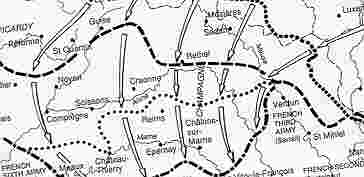
--- British lines 22nd August 1914, ..... 30th August ,-.-.-.3rd September
In the meantime the officers and men of the Bays were improvising a firing line, while the Horse Gunners under Captain Bradbury, their second in command struggled to manhandle three of their guns into action. Major Sclater-Booth, the battery commander, had been wounded and blinded by a shell burst as he ran to his guns. Lieutenant Lamb, the machine gun officer of the Bays, was able to gather together some of his men and, covered by a low brick wall, bring two machine guns into action, aiming at the flashes of the German guns, which could by now be seen only 800 yards away. Under cover of this fire ‘L’ Battery got its three guns into action against what proved to be eight guns of two German batteries, with a third battery shelling the village.Colonel Ansell with two squadrons of the 5th Dragoon Guards moved out of the north end of Néry in the mist to attack the German flank, only to run straight into the 9th Uhlans and 3rd Cuirassiers. In the following exchange of fire Ansell was mortally wounded, and the 5th Dragoon Guards fell back before this overwhelming force, fighting all the way. However the mist also covered the British weakness, and the German cavalry halted their advance.
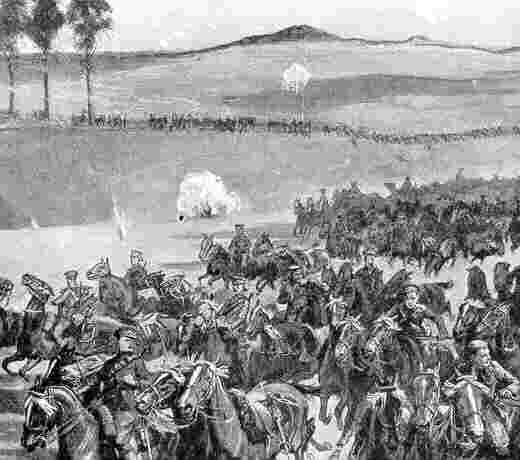
A picture of the 2nd Dragoons (Queen's Bays) during the great retreat from Mons. They were surprised at breakfast, while dismounted by enemy artillery.
The 1st Cavalry Brigade had been caught by surprise, at close quarters, by the whole of the 4th German Cavalry Division who were in greatly superior numbers; but the Germans were not sure what confronted them. This enabled individual officers and men to improvise a firing line, while gunners served their 13-pounders in the open field, bringing up the ammunition from the limber across twenty yards of fire-swept ground. Lamb, smoking a pipe, kept his two machine guns in action, concentrating on the German guns, and filling the belts by hand to keep the guns supplied while the water in the jackets boiled. The Germans now switched the fire of their third battery against ‘L’ Battery and the Bays. Two of the three guns were quickly knocked out, the remaining gun being served by Captain Bradbury, Battery Sergeant Major Dorrell and Sergeant Nelson, who had already been wounded. Bradbury had both his legs blown off, and as he was carried back, dying, he said to Colonel Wilberforce, ‘Hello, Colonel, they have been giving us a warm time, haven’t they?’ The lone remaining gun of ‘L’ Battery continued to fire until the last round had been expended.
As the mist cleared Wilberforce noticed that ‘by degrees these eight (German) guns ceased firing, and we could see the guns distinctly every time anyone came near them; Vickers and all the rifles we had slated them with fire until the Germans gave up all attempt either to serve them or get them away.’ Earlier in the day a small party of the Bays had managed to work forward to the right and occupy the sugar factory, from where they were able to check by rifle fire any German attempt to get around from that side. Eventually the Germans occupied some buildings to the east of the sugar factory, and lieutenants De Crespigny and Misa launched a counter-attack with some fifteen men. They held the objective until De Crespigny was killed, and only three were left unwounded; that is Lieutenant Misa and two men.
Soon after 8 a.m. help arrived in the form of the 4th cavalry Brigade, who coming upon the stampeded horses of the Bays feared the worst. As ‘I’ Battery’s guns came into action, however, Lamb’s machine guns prevented the Germans from bringing up their teams to withdraw their guns, and Major Ing took forward some of the Bays to capture the eight abandoned guns, the first to be taken by the BEF. By 9.45 a.m. the Germans had withdrawn.
The Bays lost Lieutenant Champion De Crespigny and four men killed, one of them was Edward. Majors G. H. A. Ing and A. E. W. Harman, Captains E. S. Chance and W. F. G. Renton, Lieutenants E. Walker and F. D. R. Milne, Second Lieutenants L.W. White and H. D. St. G. Cardew, and thirty-five men were wounded. About eighty horses were killed, and many of those stampeded were temporarily or permanently lost. Seventy-eight Germans were taken prisoner and their dead lay mainly around the captured guns - all were either cavalry or artillery men.
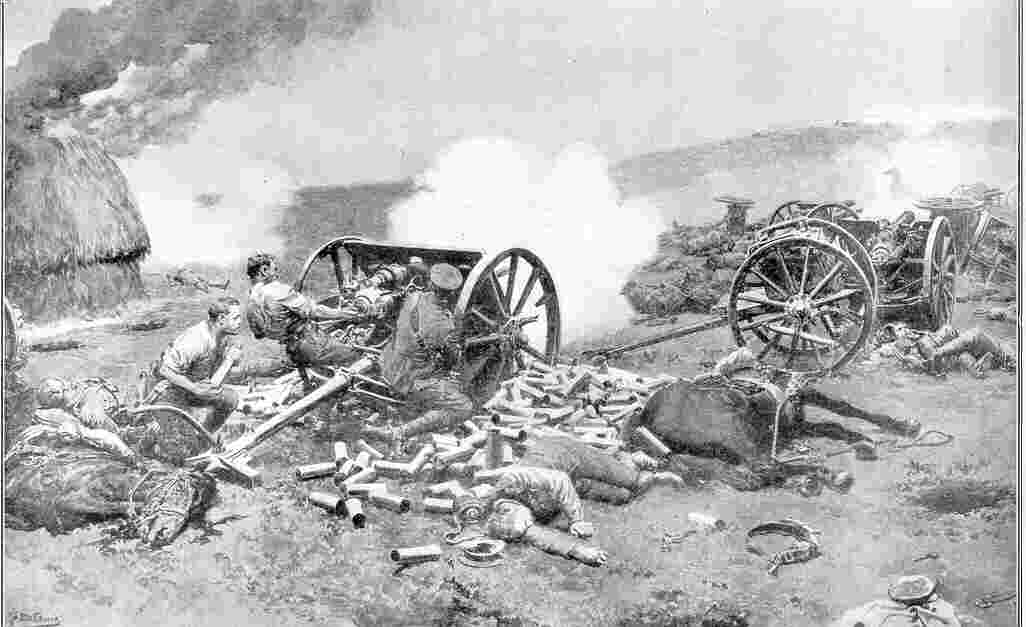
Captain Bradbury, Battery Sergeant Major Dorrell and Sergeant Nelson of ‘L’ Battery were all awarded the Victoria Cross. Lieutenant Lamb of The Queen’s Bays was awarded the DSO and was mentioned in Despatches, as were the seven Bays who served the machine guns, Lance Corporal Webb and Troopers Goodchild, Phillips, Fogg, Emmet, Ellicock and Horne. In addition Ellicock was given the DCM.
The action at Néry was over by 10 a.m., and the retreat resumed at 11 a.m. In the meantime the battlefield was cleared, the damaged guns removed, and Lieutenant Lamb replaced his losses in the machine gun and wagon teams with loosed and captured horses. The weary way back continued in hot weather through Senlis, Moussy-le-Vieux and Gournay, until the Bays reached the northern outskirts of Paris on 5 September, spending the night at Aubepierre.
The retreat from Mons was now over, and on 6 September the regiment received orders to advance, first to the east to Jouy-le-Chatel, and then north, to cover the advance of the British centre and left. The Bays were not seriously engaged, but managed to pick up a straggler from a German cuirassier regiment while clearing some farms. On bivouacking that evening the Bays had present 17 officers, 7 having been killed or wounded; 423 NCOs and men, with 114 dead, wounded and missing; but there were only 304 riding horses left of the original 527, and 48 draught horses out of 74.
*********************************
Edward is buried at Verberie French National Cemetery, Oise, France.Verberie is a village on the River Oise, 11 kilometres south-west of Compeigne on the main road to Senlis and Paris.
There are now over 70 , 1914-18 war casualties commemorated in this site. Of these, over a quarter are unidentified and a special memorial records the names of twelve men of "L" Battery, R.H.A., who fell in the Affair of Nery: five are buried here and seven at NERY COMMUNAL CEMETERY, none of whom could be individually identified, hence they are all commemorated at both sites. Also included are the names of twelve of the seventeen men of the 2nd and 5th Dragoon Guards, who fell in the Affair of Nery and are buried in this grave.
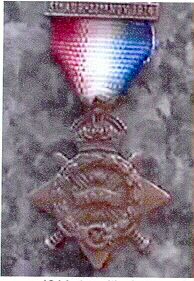
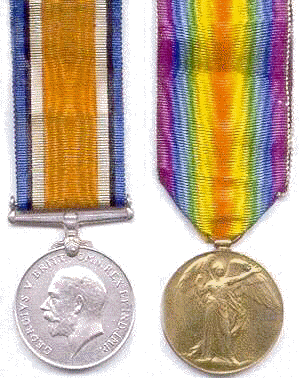
He was awarded the Allied Victory Medal, The British War Medal and the 1914 Star for France (The "Mons" Medal ). The later shows the date 15th September 1914, being awarded after his death in France.
His name is commemorated on Colchester Town Hall Memorial.
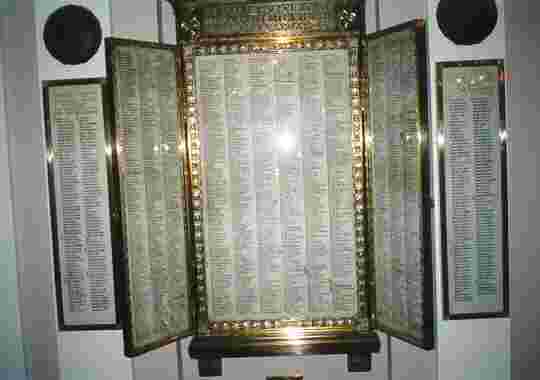
He is also remembered on beautifully carved memorials held by the regiment, The Queen's Dragoon Guards, which is descended from the Second Dragoon Guards . The Memorials are currently held at Catterick Camp and are taken with them when they change their base.
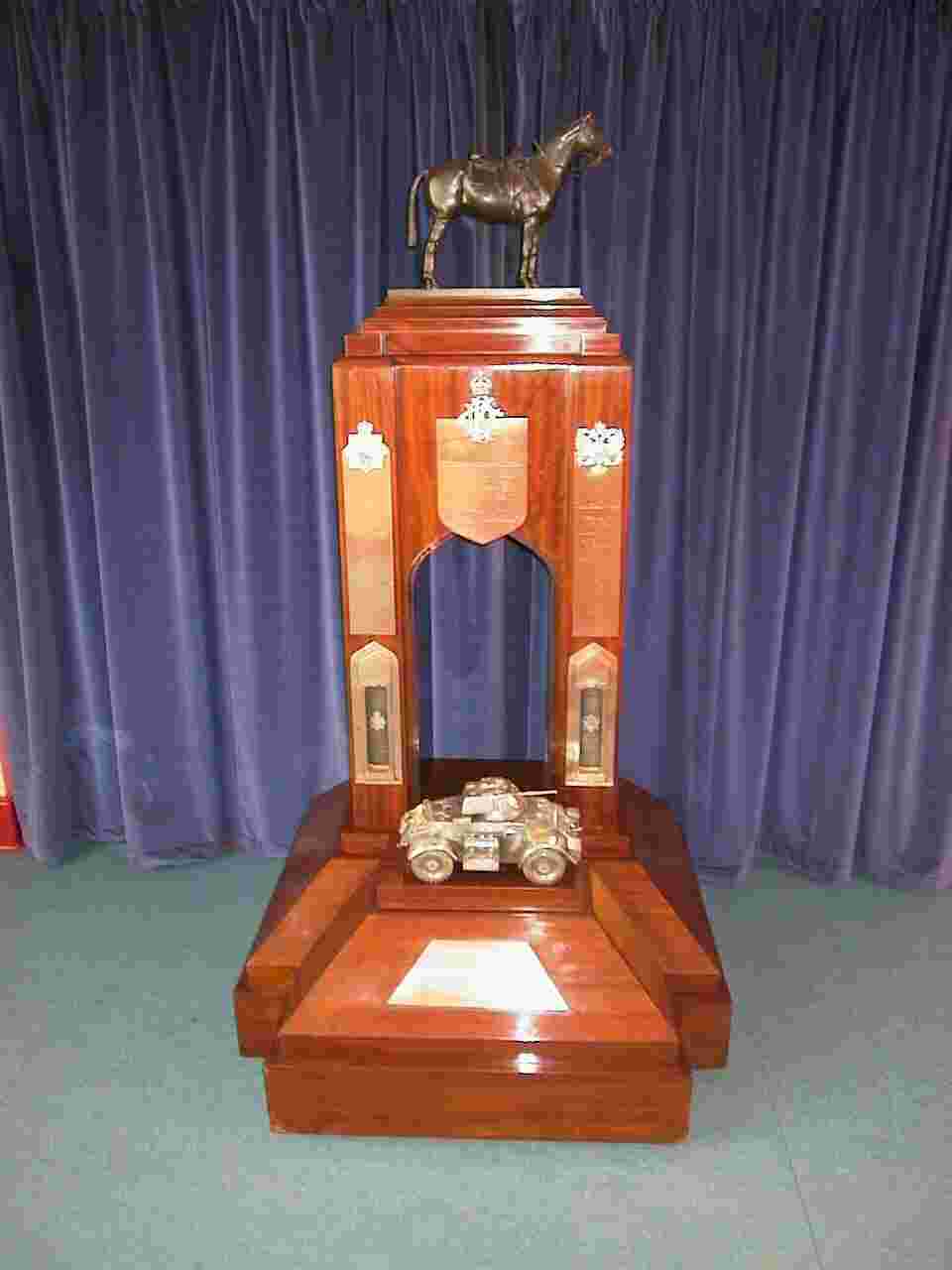

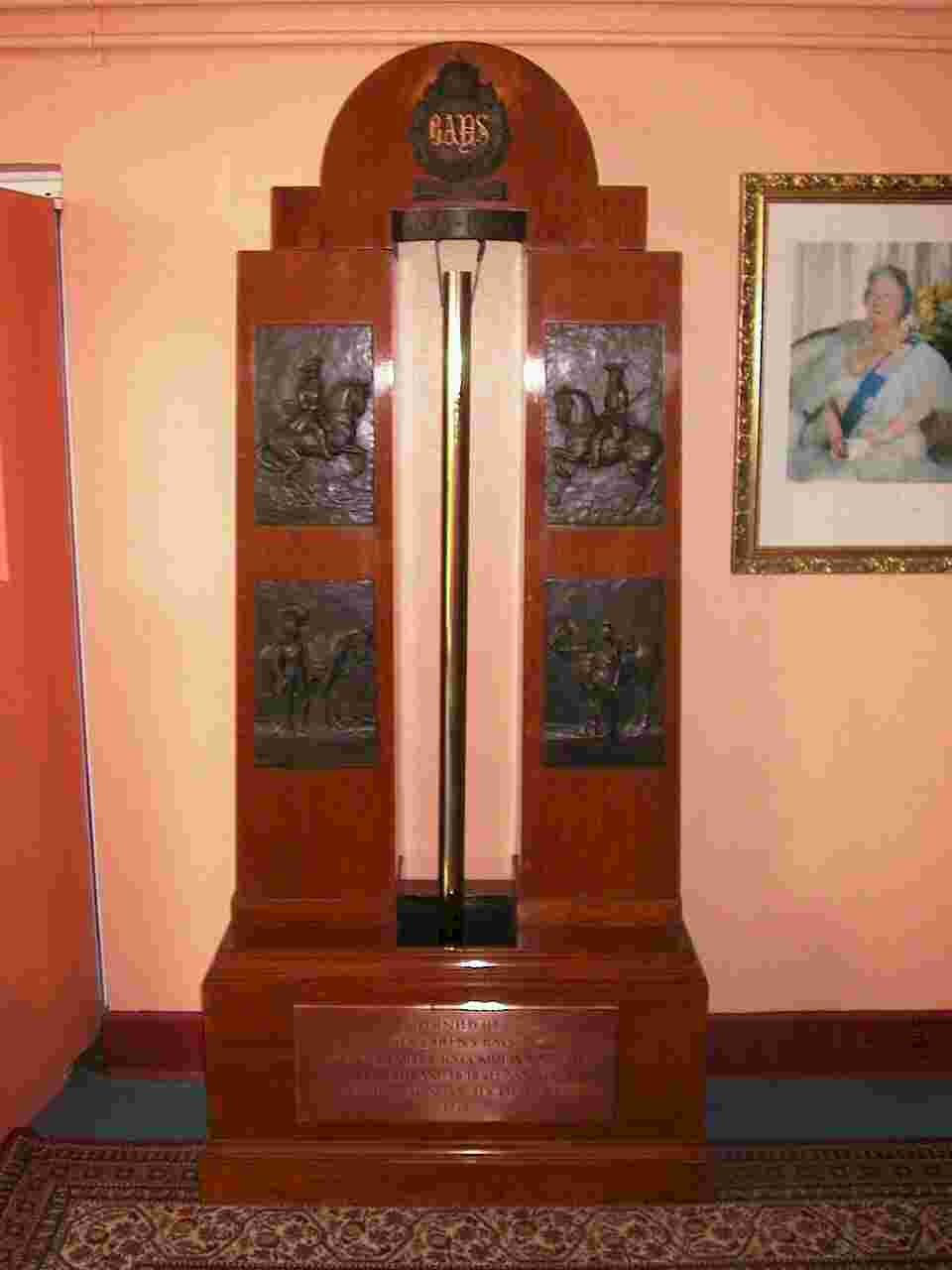
REFERENCES
Information obtained from The Commonwealth War Graves web site. www.
cwgc.org/ The pictures of the medals were kindly provided by Worcestershire Medal Service Ltd The picture of the Queen's Bays is taken from a book "The Great War, The Standard History of the all-Europe Conflict" Volume 2 page 134 by a series of writers and the publisher is not given. The "Affair at Nery" is taken from the same book page 126We are indebted to Museum of the Queen's Dragoon Guards at Cardiff for permission to use the description of the history of the Bays in 1914 from their website http://www.qdg.org.uk/ .This is a very interesting site and worth visiting.
The picture of Bakery Cottage is taken from the collection of the late May Harrison, who for many years was organist at Saint Andrew's Church. His Regiment kindly provided the pictures of the Unit's Memorials . 10/26/02 updated**********************************************************
These pages are dedicated to the memory of the Fallen from the two World Wars, who lived in Abberton & Langenhoe.. Prepared by Saint Andrew's Parochial Church Council. November 11th 2000